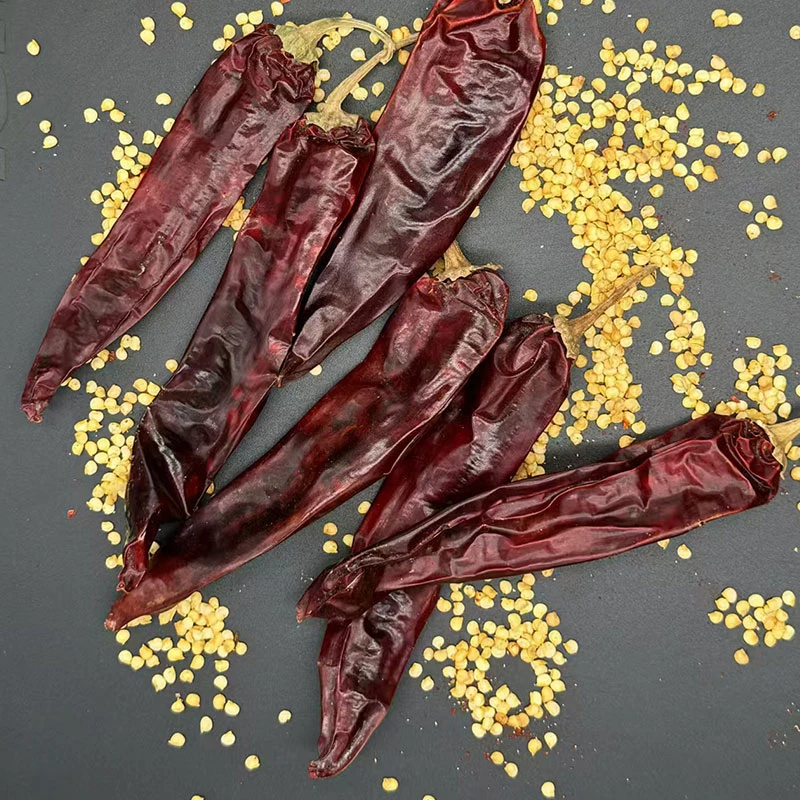- No. 268 Xianghe Street, Economic Development Zone of Xingtai city, Hebei 054001 China
- Byron@hbhongri.cn
paprika pods
The Vibrant World of Paprika Pods
Paprika is a spice that not only adds flavor to dishes but also brings a burst of color to our culinary creations. Derived from the dried pods of Capsicum annuum, paprika is a staple in many kitchens around the world, particularly in Hungary, Spain, and other Mediterranean countries. This article delves into the fascinating world of paprika pods, exploring their history, cultivation, varieties, culinary uses, and health benefits.
A Brief History of Paprika
The history of paprika is as rich as its flavor. It is believed that paprika originated in Central America and Mexico, where indigenous peoples used chili peppers for culinary and medicinal purposes. The spice made its way to Europe in the 16th century, primarily through the Spanish and Portuguese explorers who brought it back from the New World. Hungary played a crucial role in elevating paprika to its status as a renowned spice, where it was cultivated extensively. By the 18th century, Hungarian paprika became a quintessential element of many traditional dishes, including goulash and pörkölt.
Cultivation of Paprika Pods
Growing paprika starts with selecting the right variety of chili pepper. Paprika is typically made from the sweeter, milder peppers that have a low to moderate heat level. The plants thrive in warm, sunny climates with well-drained soil. Preferred growing temperatures range between 70°F and 85°F (21°C to 29°C). Farmers usually plant paprika in late spring and harvest the pods in late summer or early autumn, once they have ripened to a vibrant red color.
After harvesting, the pods undergo a drying process that can involve air drying or using dehydrators. The method of drying can significantly affect the flavor profile, aroma, and color intensity of the paprika. Once dried, the pods can be ground into powder, creating the familiar spice that is a pantry essential in many homes.
Varieties of Paprika
Paprika comes in several varieties, each with its own distinct flavor, heat level, and color. The most common types include
1. Sweet Paprika This variety is mild, with a sweet flavor and vibrant red color. It is commonly used in dishes such as stews, soups, and sauces.
paprika pods

2. Hot Paprika As the name suggests, hot paprika has a spicier kick, making it ideal for those who enjoy a bit of heat in their meals. It is frequently used in spicy dishes and can be added to meat rubs.
3. Smoked Paprika Also known as pimentón, this paprika variety is made from peppers that are smoked before being dried. Its smoky flavor adds depth to dishes and is a staple in Spanish cuisine.
4. Hungarian Paprika This variety ranges from sweet to hot but is renowned for its rich flavor and color. It often features in traditional Hungarian dishes and is considered a premium paprika.
Culinary Uses of Paprika
Paprika is incredibly versatile and can be used in various culinary applications. Its vibrant color makes it a favorite for garnishing dishes such as deviled eggs, potato salads, and roasted vegetables. In addition to being sprinkled on top of dishes, paprika can be incorporated into marinades, rubs, and sauces to enhance flavor. It pairs marvelously with meats, fish, and vegetables.
Moreover, paprika is a key ingredient in numerous global dishes. In Hungarian cuisine, it defines the flavor profile of goulash and chicken paprikash. In Spanish cuisine, it plays a prominent role in dishes like paella and chorizo. Its adaptability ensures that it finds a place in a wide range of cuisines worldwide.
Health Benefits of Paprika
Beyond its culinary appeal, paprika also boasts several health benefits. It is rich in antioxidants, including carotenoids, which are known for their anti-inflammatory properties. Paprika is also a good source of vitamins A, C, and E, contributing to overall health and well-being. Additionally, the capsaicin found in peppers may help boost metabolism and promote a healthy digestive system.
Conclusion
From its vibrant color and diverse varieties to its rich history and numerous health benefits, paprika pods are a treasure in the culinary world. Whether you prefer sweet, hot, or smoked paprika, this spice can elevate the most mundane dishes, adding flavor, color, and a touch of warmth to your meals. So next time you reach for that paprika jar in your spice cabinet, remember the journey of those beautiful pods and the joy they bring to your table.
-
The Versatile Uses and Benefits of Capsicum Frutescens Oleoresin and ExtractsNewsJun.03,2025
-
Paprika&Chili Products Enhancing Flavor and Wellness in Every BiteNewsJun.03,2025
-
Paprika Extract and Capsicum Applications in Food and IndustryNewsJun.03,2025
-
Exploring the Benefits and Uses of Turmeric Powder and Curcumin ExtractNewsJun.03,2025
-
Discover the Bold Flavor of Premium Chilli Powder from ChinaNewsJun.03,2025
-
Capsicum Oleoresin Extract: A Potent Natural Ingredient in Modern ApplicationsNewsJun.03,2025







